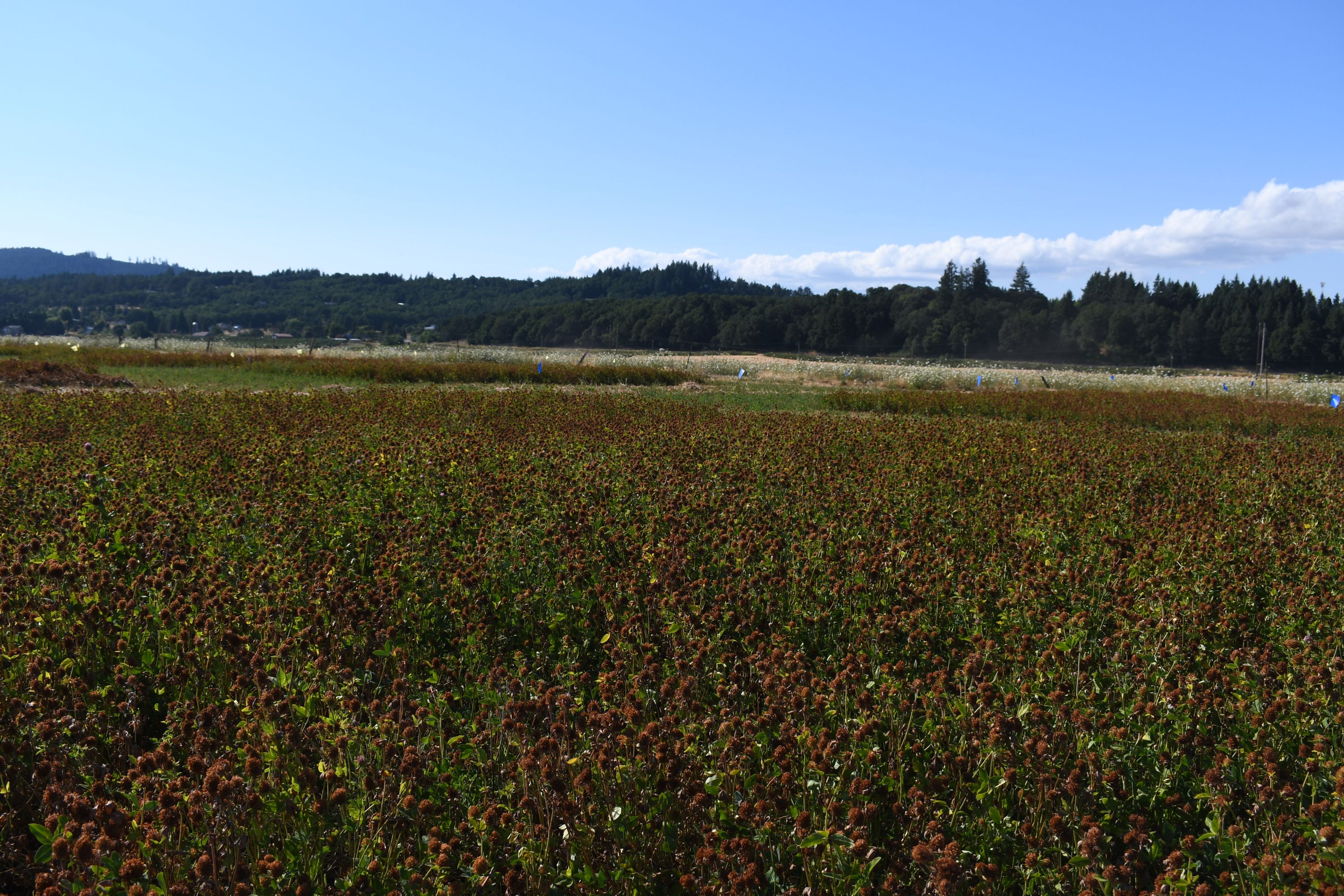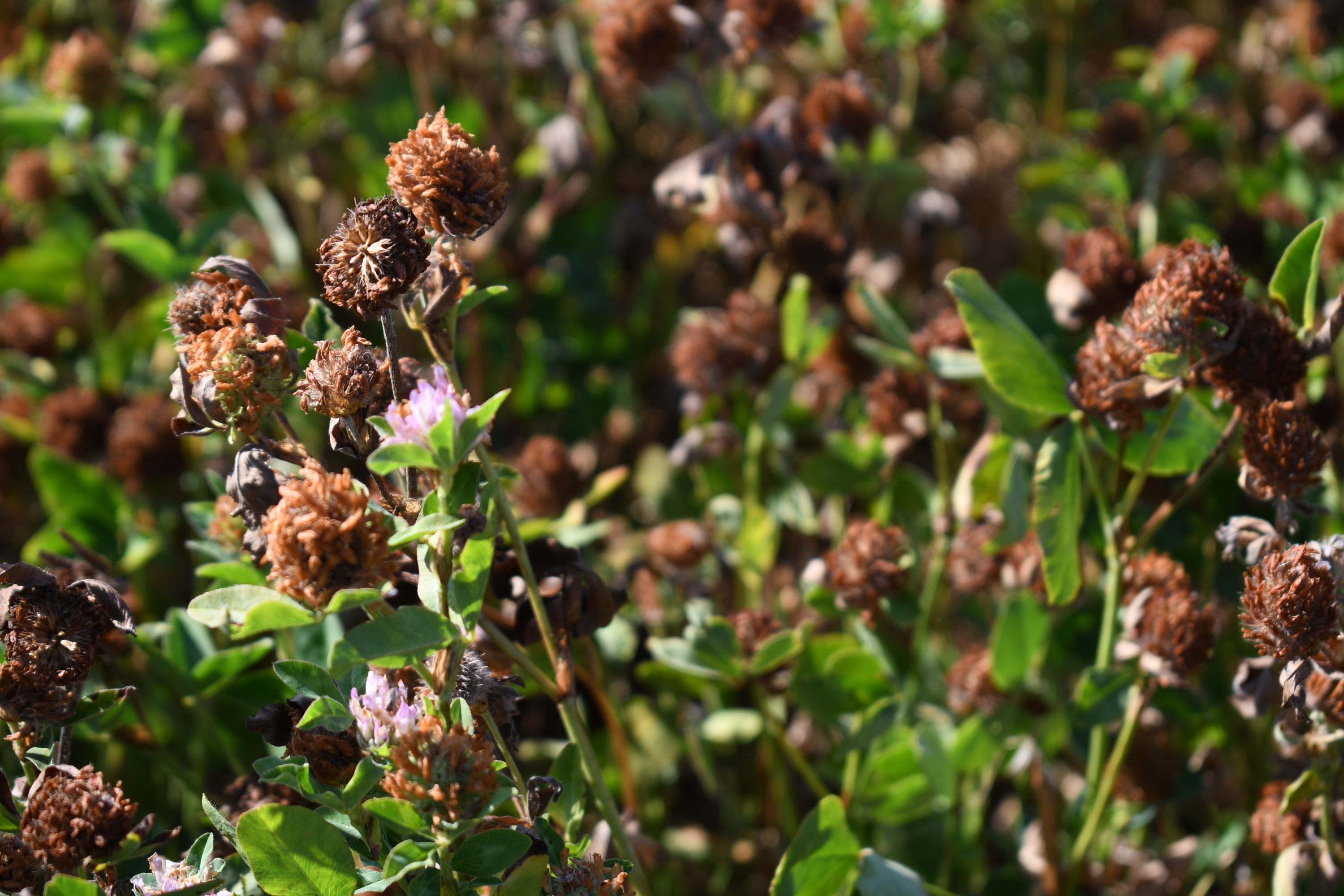Oregon Research Improves Residual Toxicity Warnings to Benefit Bees and Growers

It’s the kind of situation that can spiral downhill quickly. Beekeepers providing hives for pollination feel their bees are suffering excessive losses and fear improper insecticide use is to blame. Growers insist they are following label requirements and using necessary insecticides correctly to protect the bees.
Both sides believe they are doing everything right, yet the outcomes are all wrong.
In other places, this dynamic has led to conflict and recrimination. But this was happening in clover-seed fields in Oregon, a state with the only university scientist in the country tasked with both helping the state’s managed bee industry and also protecting its wild and native pollinators.
So the question, instead of devolving into “Which side is in the wrong?” or “What are they doing wrong?” became far more useful and interesting:
What if the insecticide labels are wrong?
What if the federal precautions and restrictions growers are following simply aren’t adequate to protect pollinators as they should?
Those are questions with consequence. Answering them could not only prevent conflict between two important agricultural industries in Oregon, it could also help clover-seed growers achieve maximum pollination of their crops while simultaneously protecting the state’s managed and wild bees.
Enter Andony Melathopoulos, the university scientist mentioned above. An associate professor of pollinator health extension at Oregon State University, Melathopoulos decided to take a closer look at all the insecticides used by clover-seed growers, looking specifically at residual toxicity – the period of time after an insecticide is applied that it’s still fatal to foraging bees.
The Western Integrated Pest Management Center funded his research.
“Some insecticides can be applied at dusk, when bees go back to their nests, and dissipate overnight to a safe level so they are not toxic when the bees start foraging again the next morning,” Melathopoulos explained. “We wanted to know whether the instructions being given to growers in terms of how quickly these products dissipate aligned with the data we have on those products.”
Both industries supported the effort.
“There was no finger-wagging, no ‘you people,’” said Salem beekeeper Harry Vanderpool with the Oregon State Beekeepers Association. “Both sides recognize that if bee colonies look better when you move them out of a crop than when you move them in – and they should – then the grower is getting the best pollination possible and will have great tonnage.”
Studying Some 500 Studies
Melathopoulos and his research associates began by collecting and analyzing nearly 500 separate trials of the insecticides of interest, looking specifically for residual toxicity information and comparing that data to the toxicity warnings given in the pesticide labels.
Two problems quickly became apparent.
“First, for a good chunk of the products, almost a third, there wasn’t any data on residual toxicity, which is really a data deficiency,” he said.
The second problem was even more concerning.
“Many of the labels, again almost a third, didn’t have the appropriate warning on them,” he said. “So growers who used them would think the product would be safe to apply in the evening when if fact it would remain toxic to bees the following day.”
The labels were wrong.
A Delicate Dance of Pests and Pollinators
All growers balance competing priorities as they produce crops, but seed producers have special challenges. They need the services of honeybees, bumblebees and other insect pollinators to visit each flower so it produces seed, and they need to control insect pests like aphids than can devastate their crop.
“Aphids will just ruin the seed heads if they’re out of control, so growers monitor and apply pesticides when they exceed a threshold,” Melathopoulos said. “But there will be honeybees on contract in the crop at that time, and this is a unique crop and there will also be a lot of bumblebees as well.”

Growers value those bumblebees because they’re a bit more cold tolerant than honeybees and able to get out in the damp, cool conditions common in a Pacific Northwest spring.
Temperature itself is another confounding factor for growers, beekeepers and pesticide applicators. In cold conditions, bees don’t typically forage and some newer insecticide labels allow for application when the forecast is below 55 degrees.
“That becomes an opportunity for growers to manage their insect pests,” Melathopoulos said. “If they know they’re going to have a couple of cold days, they can get a product on and have it dissipate before bees get back out to the fields.”
But available residual toxicity data doesn’t account for temperature.
“One thing we don’t have a great handle on is whether under different environmental conditions the dissipation will be faster or slower,” Melathopoulos said. “I would say that if you’re going to have cold conditions overnight the dissipation might be a little bit slower, so you’d need to build some caution in when thinking about applying some products.”
Another issue the analysis of the previous studies identified is that the rate, or concentration, at which products were applied didn’t affect their residual toxicity very much. Different formulations of products did have an impact, but rate really didn’t.
“This is important because for some products in the current guidance there are rate-specific residual times and we didn’t see any evidence that rate has an impact on residual times,” Melathopoulos said.
Making Recommendations Beyond the Label
Like most Extension-led integrated pest management research, Melathopoulos’ project has a very practical aim – to update recommendations to growers so they can better manage their insect pests and pollinators. Specifically, growers will get more accurate information about how long particular insecticides will remain toxic to bees.
“We’ll be taking the information from the study and putting it into a publication that has a long reputation in the Pacific Northwest spanning back to the 1980s called How to Reduce Bee Poisoning from Pesticides,” Melathopoulos said. “Growers and crop consultants routinely use this manual to make pest management decisions.”
There is also a popular electronic application growers use to look up insecticide active ingredients or product names, and Melathopoulos said it will also be updated with the new residual toxicity recommendations from the study. He expects the updates will be published in the spring of 2024.
“Again, we’re doing this because we’ve found deficiencies on the labels,” he said.
The U.S. Environmental Protection Agency writes those pesticide labels, and Melathopoulos said the agency has been supportive throughout the project.
“When we talked to growers and beekeepers, we found that residual toxicity was one of the most important decision-making tools they used and I think EPA wasn’t quite aware of the extent to which that number was really important to their decision making,” Melathopoulos said.
Where the Oregon review has identified issues with the label guidance, he expects EPA will take that information into account when those products come up for renewal and labels are updated.
In the meantime, Pacific Northwest growers will have updated recommendations and much higher confidence that the products they use for pest control at night won’t harm the bees they need the next morning. And beekeepers will have greater confidence their hives will emerge healthy after contract periods at clover farms.
“We recognize growers are really trying to do their very best to make the right decision, and we’re all trying to collaborate,” Vanderpool said. “And this project helps.”